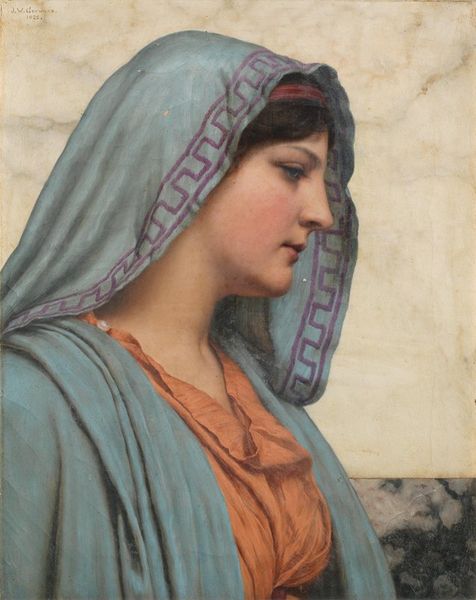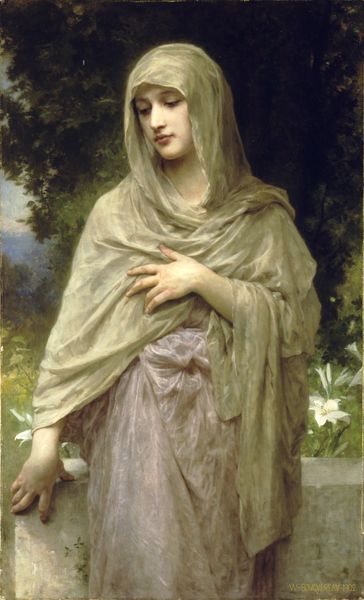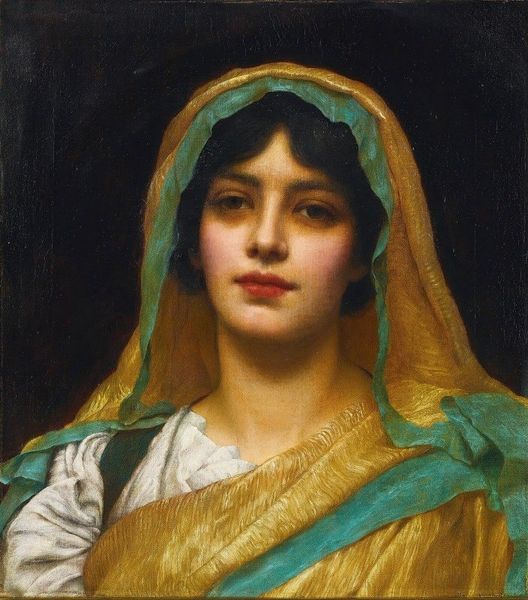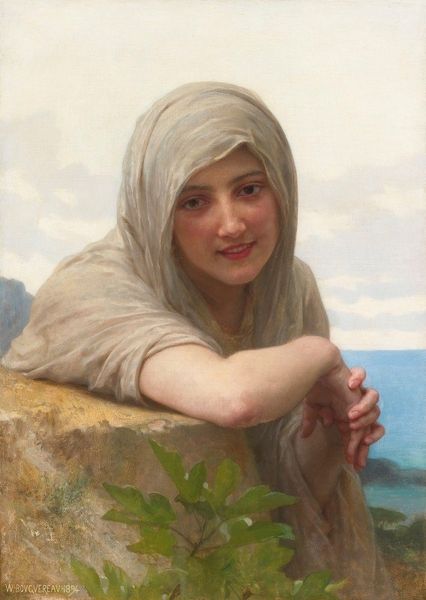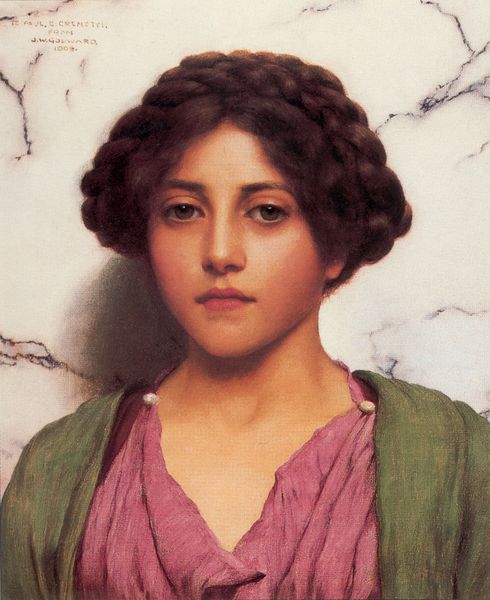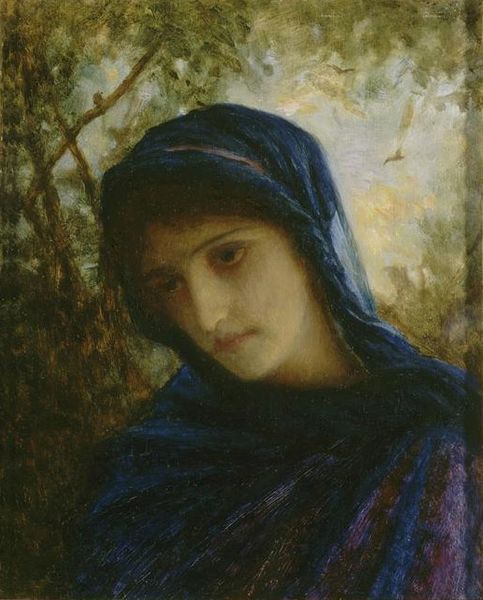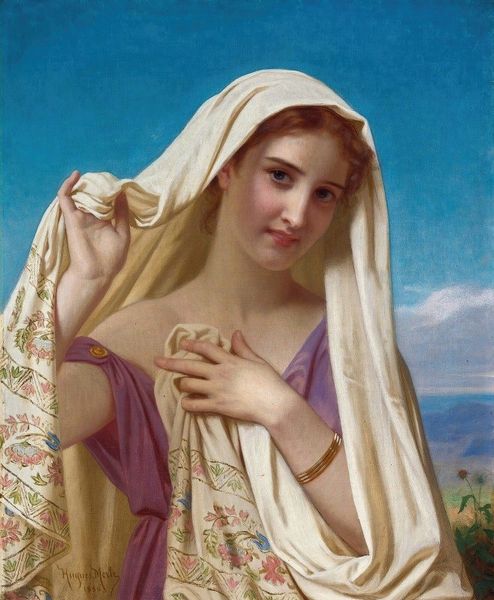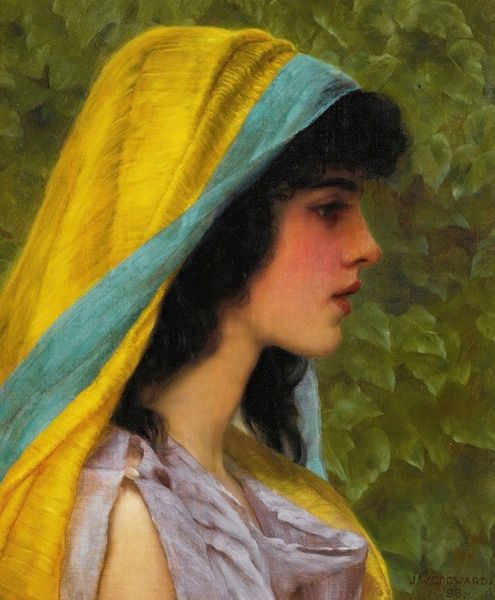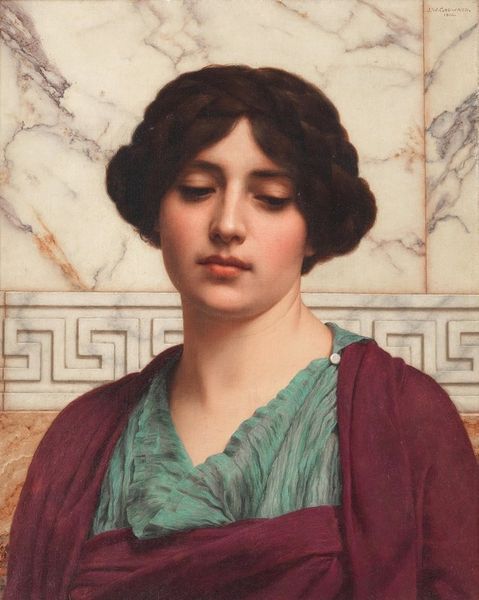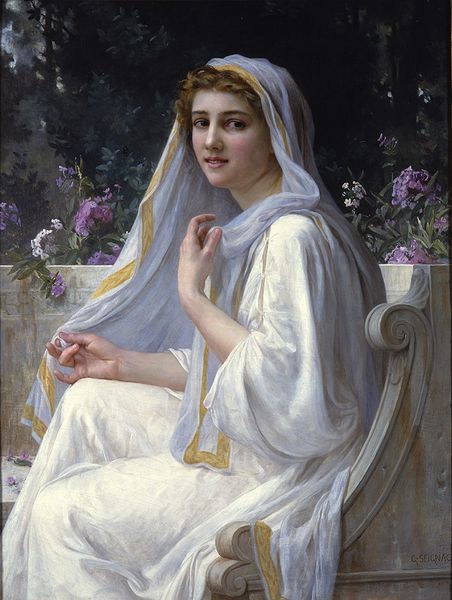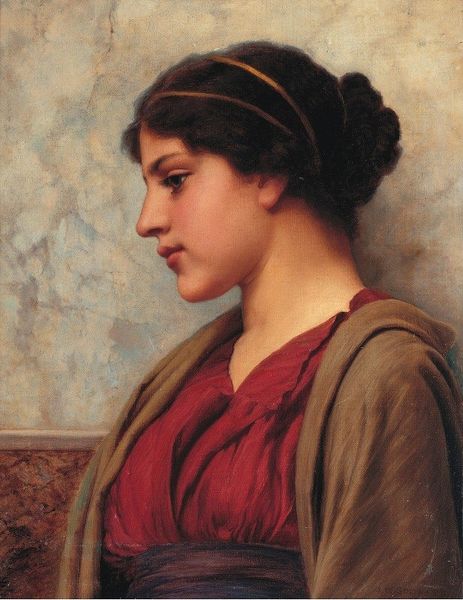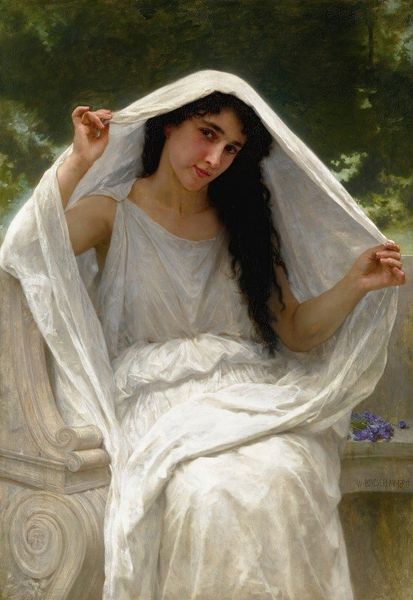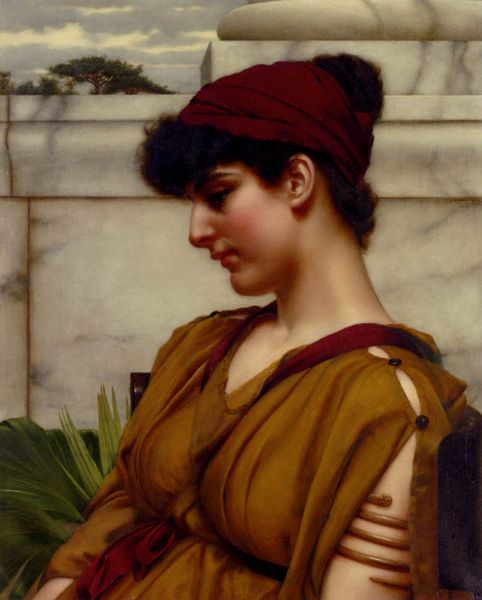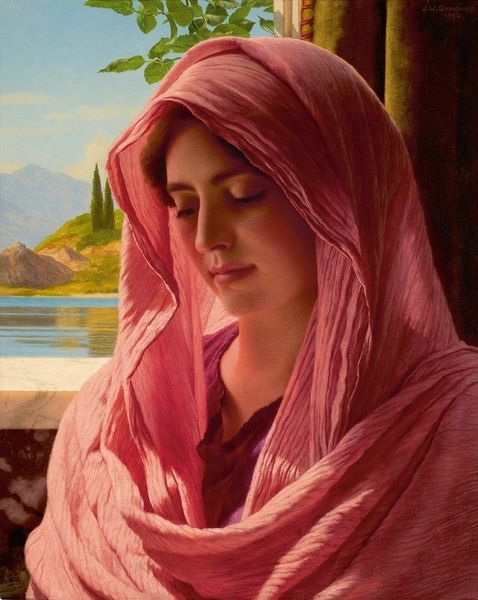
Dimensions: 51 x 40 cm
Copyright: Public domain
Curator: Looking at John William Godward's painting, Lycinna, completed in 1918, I'm struck by this serene, almost melancholy beauty he's captured. It's oil on canvas. What are your initial thoughts? Editor: Immediately, I see a carefully constructed image of female passivity, almost like a marble sculpture come to life, yet imprisoned within the canvas. Her gaze seems directed inward, hinting at a suppression of her own desires or ambitions. Curator: Absolutely, but there's a delicate vulnerability there too. Godward, in his fascination with ancient Greece and Rome, often placed his figures in these idealized settings. The texture of her draped garment is gorgeous – a tactile quality that feels almost at odds with the implied emotional distance. It reminds me of old Hollywood glamour shots, or Pre-Raphaelite paintings... but does she *feel* like she’s from either era? I'm not so sure. Editor: The backdrop of swirling marble—another common element in his work—serves to elevate and isolate her, further reinforcing that she's an object to be admired rather than an active subject. Her positioning in this tableau says much about the societal constraints placed on women of the period – and possibly of ours, too. We can read it as commentary on enforced purity and the repression of women's voices, really. Curator: And the softness of her face, so delicately rendered... it creates an interesting tension. Godward wasn’t unaware of those social constraints either, given his, shall we say, tragic exit. His classical revival feels both timeless and strangely stuck in time—the real woman would not have stood for it, would she? Editor: Precisely. What looks like beauty on the surface is fraught with the implications of male gaze. How are women framed and defined? Whose perspective are we seeing the world from when we consume images like this one? These are some of the questions it provokes for me. Curator: It certainly forces us to acknowledge the artist’s choices and how they impact our reading of the subject, doesn’t it? Even through such idyllic classicism, one could say something feels uneasy. Editor: Right. Looking beyond the aesthetic pleasure and acknowledging these inherent power dynamics offers a crucial insight into these paintings—one often missing in traditional art historical narratives. Curator: Absolutely. Well, I guess the question then, is what will Lycinna do, next? Editor: What do you mean by "next"? After all these centuries? I don't believe in resurrections, or fairy tales for that matter, unless it serves the narrative of today's struggle. I prefer to believe Lycinna is one of us, one of you. One to come!
Comments
No comments
Be the first to comment and join the conversation on the ultimate creative platform.
